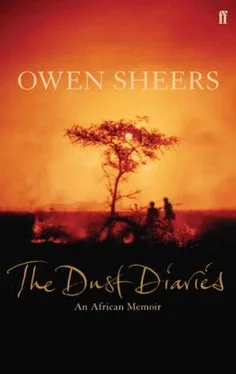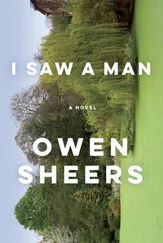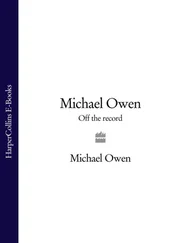It occurred to me that it would be well if one would make effective representations against the proposed tampering with the Reserve, to make certain investigations of sorts on the spot myself. So I set myself a route through some of its reputed dry bush-veld country last October, and followed it out without much deviation. It was the end of the dry season proper then; I make that admission for what it is worth, with the qualification that a quite unusually early September rainfall had demonstrably made itself felt in some of the parched country I passed through. Indeed, in a patch I visited, munga (native bulrush-like millet) seemed to have made real headway already. I left the Assistant Native Commissioner’s Camp at Buhera’s behind me and travelled on by Matin dera Ruins and Mut-shutshu’s Ruins, through some desolate country, towards Betera’s. Afterwards I crossed the Mirihari river not far from its junction with the Sabi, and passed on amid interesting big-game and (reputed) lion country. I went thence into Mambo’s tract, that seems to have been much depopulated (owing to the pressure of droughts in recent years, time and time again). Then at last I came into fine native hilly country (I was in Tshitsungi’s realm then), and on to the beautiful river Rwenje, up whose right bank (going upwards) route A runs. I was to see something for myself of an already well-populated country, that promises soon (under pressures of evictions from private lands) to be quite thickly populated as Mashonaland goes, a country that is threatened by the Reserves Commission’s verdict, a country that our big but partially barren Sabi Reserve can ill afford to lose.
I went through bad country that the Commission has proposed to leave our natives undisturbed in their possession of, a real bad class of country, comparatively speaking. I pursued my travels on this Reserve in a countryside of some very fair country (on the whole) that the Commission has seriously menaced with a loss of over a quarter of a million acres. I give some extracts from my revised notes such as they are:
Saturday, October 11th
I saw no water for some while after that on the ground we travelled. The water bottle that had been lent me was to do me splendid service…Not far beyond was the site of the old Camp, which is reported to have been abandoned owing to shortness of water supply…
Sunday, October 12th
After service and breakfast we came through some very dry country indeed…The country we had got amongst seemed of a different class to that around Enkeldoorn, generally speaking. Shown a plant with purplish pink flower that is used to burn salt. Saw a comparatively small number of human inhabitants and cattle. We struck paramount Chief Nyashano’s wagon road some way from Matindera Ruins…Great baobabs stood up fantastically with but small show of earth to nourish them…We saw water on rock near, a small rain-fed pool in appearance; it was screened with turfs…
Monday, October 13th
We travelled on to Mutshutshu’s where there seems to be a fairly well-watered sort of oasis in a very dry countryside…We decided not to go on till morning; the road ahead was said not to be very well watered. We slept outside near the little town of grain-bins beside the kraal. Smallness of grain-bins was, it appeared to me, rather a feature of this countryside.
Tuesday, October 14th
There seemed to be cultivation and inhabitants about, for some way, then the country became wild. Bush grew very thick in one strip…
Wednesday, October 15th
I heard how people had migrated from Mambo’s drought-stricken country — making for Magaya’s and Tshitsungi’s countries. We came on to paramount Chief Mambo’s tiny village…country very desolate apparently. We came on…into Tshitsungi’s country. We had got into better-looking country now, at least country more of the sort one knew nearer home, not that water-short bush-country of Nyashano’s realm. We had crossed a small flowing stream (it was my first sight of such a thing for full five days, I believe)…We descended by a great descent to the River Rwenje — a beautiful and ample stream where we crossed it. We were now in the country menaced by that decision of the Reserves Commission, which claims as reversion not only a fifty-yard strip, but a six-mile belt on each side of the proposed railway.
Friday, October 17th
There seemed to be fine open ground about in that valley, as well as rough ground…I had just been directed towards my journey’s goal by a native iron-worker. I found him hammering with a stone at a hoe-head, his anvil being a rock. The goatskin bellows blew while he left his job to help me. We came on…sighting various villages, some rough ground and some open ground. I noticed some promising-looking red soil, and also some swamp-ground. We came on largely by a sledge-way, to Kwenda’s mission farm…Let us hear one conclusion on this whole matter! — There is some poor land apparently very ill-suited in its present state to carry a large population of folk or cattle in the Sabi Reserve. Therefore the Sabi Reserve can ill-afford to lose fine native ground .
Saturday, October 18th (StLuke’s Day )
I saw some more threatened land that can be ill-spared, but before many miles were travelled I was doubtless in the Wiltshire Estate. It is not of course proposed to ask from the European Co.’s Wiltshire Estate more than a fifty-yard strip to feed the promised railway.
The Native African Sabi Reserve it is that stands to lose a twelve-mile belt to the railway, involving a loss of 291,800 acres, much of it good land surely, while large tracts in other parts of the Reserve are bad. God help us!!!
FEBRUARY 1920:BSA Company’s Resident Administrator’s Office, Salisbury, Southern Rhodesia
‘Do you know what the local police call that place of his? Sherwood Forest. That’s what. There are that many thieving piccaninnies and shirkers hiding out down there.’
Atherstone’s face was strained, taut across his temples, the veins in his neck standing proud above his collar. He turned on his heel and paced back to the far end of the Administrator’s office.
♦
The Company’s Resident Administrator, Sir Donald Chaplain, did not want to be in his office. It was a fine evening and he would rather be in his garden. There were some petunias that needed tending. And a clematis to be tied back. But instead he was in his office at the end of a long day and although the window was open, the room was stifling. And now Atherstone had started shouting again.
He gestured towards a wicker chair in the corner of the room, but Atherstone ignored his offer and kept pacing up and down. Sir Donald sighed and looked across at the Chief Native Commissioner, who sat in a reading chair staring at a point on the floor, Atherstone’s shadow flicking across his face with each pass of the open window.
‘How about you, Herbert? You’ve spent some time down there. Have you been to Cripps’ place?’
The Chief Native Commissioner adjusted his position in the chair. He too would rather have been elsewhere. His wife was cooking a dinner party tonight and he wanted some peace at home before the guests started arriving.
‘Well, his running of things down there is somewhat unconventional. It certainly contributes to the difficulties faced by the Native Department, I mean in our efforts to maintain the prestige of the European community, not to mention discipline amongst the natives.’
‘And do you know why the veld fires never touch his farms?’ Atherstone was still caught up in his own round of rhetorical questions. ‘Not because he’s blessed, which is what the kaffirs think of course.
No, the only reason those fires never touch his place is because there’s no bloody grass left there to burn. He’s got so many of them farming there that the ground is bare, dust!’
Читать дальше

![Никки Сикс - Героиновые дневники. Год из жизни павшей рок-звезды[The Heroin Diaries - A Year in the Life of a Shattered Rock Star]](/books/78612/nikki-siks-geroinovye-dnevniki-god-iz-zhizni-pavshej-rok-zvezdy-the-heroin-diaries-a-yea-thumb.webp)










